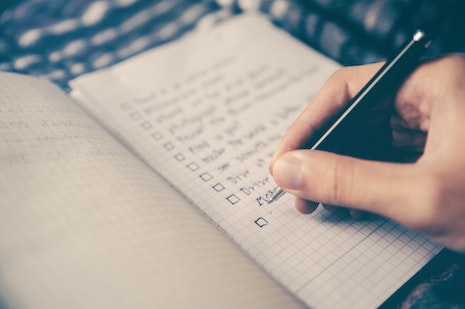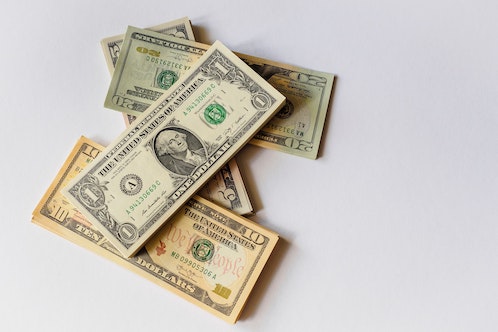Long before online banking transactions became the norm, the check was the preferred method of payment. Most millennials reading this article may not be familiar with the mechanics and standard features of the check. Based on a 2013 survey, 50% of millennials responded they don’t use checks to transact. Fast-forward to the present day, and that number will be lower.
We assure you that the check isn’t headed to the museum alongside the abacus, the typewriter, and the fax machine. Despite the advantages of online banking, the check still remains a valuable option for completing transactions. For this reason, we created this guide to re-educate you on the parts of the check and have a better understanding of its value to cover your personal and business needs.
Contact Information
The personal contact information identifies the owner and authorized issuer of the check. You will find the personal contact information on the upper left side of the check and in most cases will feature the issuer’s first and last name and residential address.

Some check account holders may have a special logo included as part of the personal contact information.Can a check have 2 issuers? Yes – for example, a husband and wife who have decided to open an and/or checking account whereby either one of them can be authorized to sign for and issue the check.
Can a check have no contact information? Again, the answer is “Yes” and they are valid modes of payment. If you receive a check without contact information, don’t sound off the alarm bells. The issuer probably qualified only for a “starter check” account with his bank.
Now, if you issue a starter check to a supplier and he’s a bit wary on the payment, don’t be surprised if he asks you to handwrite your contact information on the back of the check. It’s also normal to have the latest information on the check strike lined by the issuer – such as the address – because it’s not updated.
Date
The Date section is located on the upper right-hand side of the check. It’s one of the most important parts of the check because if you get the information wrong, it could pose problems for the payee and invalidate your transaction. For example, you issued a check payable to a supplier dated October 19, 2020, but the current date is October 10, 2020.
When you issue a check whereby the date indicated becomes current after a few days, you have issued a Post-Dated Check or PDC. A PDC is legal but it cannot be deposited by the payee until it matures. If you don’t inform the payee beforehand that the check will be a PDC, it might turn off the payee. And if the payee is a supplier, it could affect your business relationship.
Is there an exception to the PDC rule? Yes, in some instances, debt collectors may be allowed to encash a PDC. While issuing PDCs is generally accepted, don’t be surprised if some vendors won’t honor them. If the business relationship is in its early stages, you may not be granted term payments via PDCs.
Pay To The Order Of

This part of the check identifies the recipient of the funds or the payee. It instructs your bank to whom your funds will be paid out. The person identified in the pay to the order of section is the only one who can transact with the bank. However, the payee may ask the issuer to endorse the check to his authorized representative if, for some reason, he’s unable to perform the transaction.
It’s important to get the name of the payee right. Before anything else, contact the payee and confirm the complete name that will be written on the pay to the order section. You may also issue the pay to the order section to “cash”. This means the recipient of the check can automatically encash the check at your bank. However, issuing pay to cash checks carries risk in case the check gets misplaced or lost.
Transaction Amount
Some people find this part of the check a tedious activity but it’s very important to write the correct amount of the transaction. Why? Because a bank will consider the written format of the transaction amount as the official amount of the check and not the numerical format.
For example:
Numerical Amount of the Check = US$455.27
Written Amount of the Check – Four Hundred Fifty Five US Dollars and Twenty Seven Cents
If there is any notable difference between the amount written in words and the amount written as numbers, the bank will consider the description in the written amount. Thus, it’s important to write the amount in a way that is clear and easy to understand.
Money Box
The money box is located on the check’s right side and this is where you will indicate the amount of the payment in numerical format. As described above, the amount to be written in the money box would be “455.27”.
Memo
A check has a section where you can put specific notes that may be useful for you and/or the payee. This section is called the Memo and no matter what you write, your notes will not invalidate the check. However, avoid using words and phrases that are unacceptable and may have legal implications. You don’t have to fill out the memo. If you have nothing important to write, just leave the memo section blank.
The Signature Line

The signature line is the section that validates the check because the signature of the issuer authorizes the bank to release funds from the depository account. When you open an account with your bank, you will be asked to sign signature cards. It’s very important that the signature on the check is the same as the ones you provided the bank of the signature cards.
Remember, once your check has your signature, the value stated in the transaction amount can be withdrawn. For this reason, only affix your signature on the signature when you have filled out all the details of the check. Otherwise, if your checkbook falls in the wrong hands, that person could withdraw large amounts of money from your bank account. There are some checks where the signature line contains the initials “MP” which stands for Micro Print. In these types of checks, the signature line is presented as a collection of words such as “authorized signatory only”.
The Routing Number
The routing number or the ABA routing transit number is a nine-digit code that is used to identify the bank from where the funds are drawn. On a check, the routing number is often located on the lower-left corner.
The Account Number
Your personal check will indicate your bank account number. As much as this number is visible, do not disclose it to anybody because it can expose your account to security risk. The bank account number may be located near or beside the routing number.
The Check Number
The purpose of the check number is to help you keep track of the checks that you have issued. Usually, the check number is located at the upper right corner of the check.
Conclusion
Although it has different parts, writing checks isn’t difficult at all. Issuing checks is still an accepted practice when finalizing transactions. Recording your transactions on the checkbook is a good way of keeping track of your finances. If your checkbook gets lost, report it right away to your bank.
